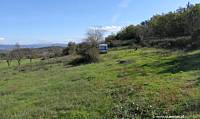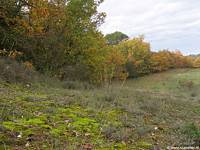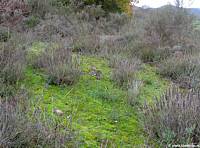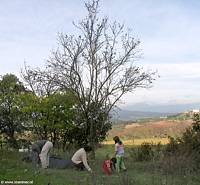|
|
Nature
Switched On
|
|
|
introduction |
This first photograph was taken one week before, when the wood
looked still more or less green. A week later it had changed to a
beautiful combination of yellow, red and brown. By contrast, the
grass and especially the moss looked exceptionally
|
Looking south-east; one week
before.
|
|
Looking west, on the centre of the terrain. |
||
|
On the southeast, lower end of
the terrain. With
Satureja montana, in the centre the
bedrock outcrops , on the right a Genista shrub. 26 Nov 12:01 |
||
|
Stones fallen perhaps some decades ago from a terrace wall higher up. Thymus vulgaris, a Galium species and Teucrium chamaedrys. |
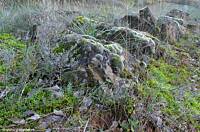 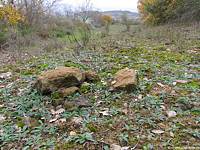 |
On the highest terrace of the
terrain, looking south-east.
Hieracium pillosella
and a
Euphrasia
species. 12:10 |
|
Picris hieracioides,
Daucus
carota,
Barbarea vulgaris,
Euphorbia cyparissias,
Sanguisorba minor,
Holcus lanatus. On
the background an almond tree. |
This photograph was taken on the
south-eastern part
of the terrain.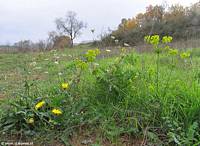
|
|
|
My interventions on the terrain were limited to the pruning of Cornus sanguinea, Crateagus monogyna, Ligustrum vulgare, and Lonicera and Rubus species. The pruning of the two dozens of almond trees had to wait until I had made a decision about using a chainsaw for the job. I had to cut some rather thick branches and my first attempts with a normal handsaw were discouraging. But I don't like chainsaws: they are dangerous, especially when climbing trees, they make a hell of a noise, they have to be maintained, stored etc. A few weeks later I bought a cheap traditional frame saw and it sawed wonderfully well. Decision made.
|
||
|
|
12 Nov 15:55 | |
|
introduction
|
||
|
|
